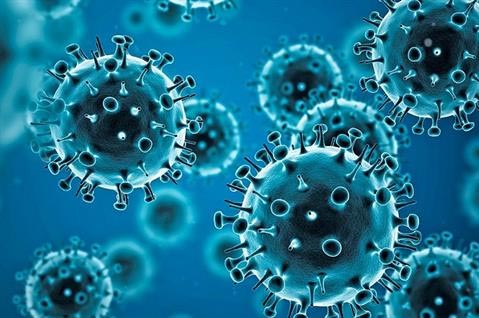ING/CAST
It is a fact that COVID-19 came to change our lives almost completely, and after a year of the entire planet enduring this pandemic, other symptoms, in addition to respiratory ones, related to this infectious virus are hardly being indicated.
In the last months of the COVID-19 pandemic, several menstruating people have detected alterations in their menstrual cycle. As the main cause of these alterations, we know that the stress of confinement and the uncertainty of the pandemic could affect symptoms such as delayed menstrual periods or intense menstrual pain. However, recently health-focused researchers found a relationship between testing positive for COVID-19 and alterations in the menstrual cycle.
Delayed periods or irregularities in the menstrual cycle have been identified as possible symptoms of the virus; as well as very heavy menstrual flows; a menstrual period much longer than normal; and changes in the amount of menstrual flow from one day to the next.
After notifying these changes, the challenge was to know through what mechanism this virus affected menstruation.
Menstruation can be easily disturbed by external factors such as infections, medications, or dysfunctions of other organs of the body. The virus enters cells through a specific receptor (ACE2) and with the help of an enzyme (TMPRSS2). This receptor and these enzymes are in the granulosa and stromal cells of the ovary, uterus, vagina, and placenta.
Although in the first studies a strong ovarian alteration was not indicated, the fact of finding elevated FSH and lH suggests ovarian suppression. This is explained because when an organism is subjected to any type of stress, ovarian function is usually suppressed to ensure the best function of essential organs and that is why so many anovulatory cycles are reported in diseases.
When measuring anti-Müllerian hormone (a substance secreted by ovarian follicles and used to measure the ovarian reserve that is being implanted) in patients with COVID-19, no significant difference was found when compared with women without the infection, but when comparing sex hormones between women with COVID-19 and healthy women, an increase in concentration was found in the first group.
Although more research is necessary on the subject to fully understand the relationship between Covid and menstruation, specialists affirm that it is normal to find the alteration in the menstrual cycle after having tested positive for COVID-19. It takes about 1 to 2 months for the cycle and menstruation to return to normal, and if this does not happen after the second month, it is essential to visit a specialized person in menstrual health.
*Please note that we are not in a position to give you medical advice. Every case is different and every woman needs specific care. You can refer to your physician if you are seeking medical consultation.
Es un hecho que el COVID-19 llegó para cambiar nuestras vidas casi por completo, y después de un año de que todo el planeta padeciera esta pandemia, apenas están indicados otros síntomas, además de los respiratorios, relacionados con este virus infeccioso.
En los últimos meses de la pandemia COVID-19, varias personas que menstrúan han detectado alteraciones en su ciclo menstrual. Como principal causa de estas alteraciones, sabemos que el estrés del encierro y la incertidumbre de la pandemia podrían afectar síntomas como retrasos menstruales o dolor menstrual intenso. Sin embargo, investigadores recientemente centrados en la salud encontraron una relación entre la prueba positiva de COVID-19 y las alteraciones en el ciclo menstrual.
Se han identificado períodos atrasados o irregularidades en el ciclo menstrual como posibles síntomas del virus; así como flujos menstruales muy abundantes; un período menstrual mucho más largo de lo normal; y cambios en la cantidad de flujo menstrual de un día para otro.
Luego de notificar estos cambios, el desafío fue saber a través de qué mecanismo este virus afectaba la menstruación.
La menstruación puede alterarse fácilmente por factores externos como infecciones, medicamentos o disfunciones de otros órganos del cuerpo. El virus ingresa a las células a través de un receptor específico (ACE2) y con la ayuda de una enzima (TMPRSS2). Este receptor y estas enzimas se encuentran en las células de la granulosa y del estroma del ovario, el útero, la vagina y la placenta.
Aunque en los primeros estudios no se indicó una fuerte alteración ovárica, el hecho de encontrar FSH e IH elevadas sugiere supresión ovárica. Esto se explica porque cuando un organismo está sometido a cualquier tipo de estrés, la función ovárica suele estar suprimida para asegurar el mejor funcionamiento de los órganos esenciales y es por eso que se reportan tantos ciclos anovulatorios en las enfermedades.
Al medir la hormona antimülleriana (una sustancia secretada por los folículos ováricos y utilizada para medir la reserva ovárica que se está implantando) en pacientes con COVID-19, no se encontraron diferencias significativas al compararlas con mujeres sin la infección, pero al comparar hormonas sexuales entre mujeres con COVID-19 y mujeres sanas, se encontró un aumento en la concentración en el primer grupo.
Aunque es necesario realizar más investigaciones sobre el tema para comprender completamente la relación entre Covid y la menstruación, los especialistas afirman que es normal encontrar alteraciones en el ciclo menstrual después de haber dado positivo por COVID-19. Se necesitan alrededor de 1 a 2 meses para que el ciclo y la menstruación vuelvan a la normalidad, y si esto no ocurre después del segundo mes, es fundamental visitar a una persona especializada en salud menstrual.
*Tenga en cuenta que no estamos en posición de brindarle asesoramiento médico. Cada caso es diferente y cada mujer necesita cuidados específicos. Puede consultar a su médico si está buscando una consulta médica.
References:
(2021). Retrieved 7 September 2021, from https://sensualintim.com/
Coronavirus. (2021). Retrieved 13 November 2021, from https://www.who.int/es/health-topics/coronavirus#tab=tab_1



